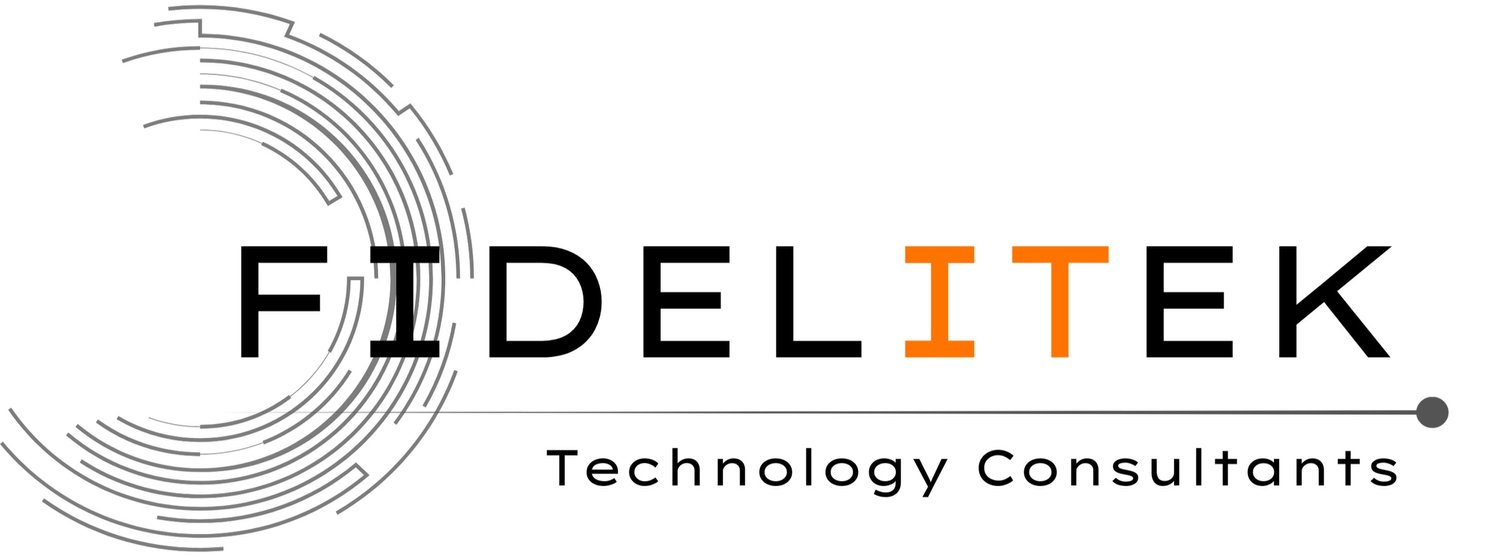The Top 10 Cybersecurity Threats Facing Modern Enterprises
Enterprises face an array of cybersecurity threats that can severely impact their operations. The rise of cloud computing, remote work, and the increasing sophistication of cybercriminals have escalated the frequency and complexity of attacks. As modern enterprises embrace innovative technologies, they must stay ahead of the curve by understanding and mitigating key cybersecurity risks. At Fidelitek, we specialize in delivering cutting-edge cybersecurity solutions designed to safeguard businesses from emerging threats. Below, we delve into the top 10 cybersecurity threats facing modern enterprises and how you can protect your organization from them.
1. Ransomware Attacks
Ransomware remains one of the most prominent cybersecurity threats in the enterprise landscape. These attacks involve malicious software that encrypts an organization's data, holding it hostage until a ransom is paid. With critical business data locked away, companies can face crippling downtime, lost revenue, and potential reputational damage.
How to mitigate ransomware attacks:
Implement a robust backup and disaster recovery plan.
Educate employees on phishing attempts, as ransomware is often delivered via email.
Ensure up-to-date endpoint protection and network monitoring.
2. Phishing and Social Engineering
Phishing attacks, where cybercriminals pose as legitimate entities to trick users into revealing sensitive information, are increasing in sophistication. In a business context, phishing often targets employees, leading to compromised credentials, unauthorized access, or fraudulent transactions.
How to mitigate phishing attacks:
Conduct regular security training and awareness programs for employees.
Use multi-factor authentication (MFA) for all corporate systems.
Deploy email filtering systems that detect and block phishing emails.
3. Insider Threats
Insider threats arise from current or former employees, contractors, or business partners who have authorized access to a company’s systems but misuse it, either intentionally or accidentally. These individuals can cause significant damage by leaking sensitive data or sabotaging operations.
How to mitigate insider threats:
Limit access to sensitive data based on role-specific needs.
Use monitoring software to track user activity and detect unusual behaviors.
Develop strict policies and controls for accessing and sharing internal data.
4. Cloud Security Vulnerabilities
As enterprises continue to adopt cloud technologies, they face new security challenges. Misconfigured cloud storage or insufficiently secured APIs can expose data to cybercriminals, leading to unauthorized access and data breaches.
How to mitigate cloud security threats:
Ensure your cloud environment is properly configured and compliant with industry security standards.
Use encryption for data in transit and at rest.
Regularly audit cloud permissions to ensure only authorized users have access.
5. Advanced Persistent Threats (APTs)
APTs are sophisticated and prolonged cyberattacks where an intruder gains access to a network and remains undetected for an extended period. These attacks aim to steal sensitive data rather than disrupt operations immediately, making them particularly dangerous for enterprises.
How to mitigate APTs:
Use advanced threat detection systems and conduct continuous monitoring.
Implement network segmentation to minimize access to critical systems.
Conduct regular penetration testing to identify and close vulnerabilities.
6. Distributed Denial of Service (DDoS) Attacks
DDoS attacks overwhelm a company’s network, servers, or websites with a flood of traffic, rendering them unavailable to users. While the primary goal may be disruption, DDoS attacks can also be used as a diversion tactic while other malicious activities take place.
How to mitigate DDoS attacks:
Use cloud-based DDoS protection services that can scale to absorb traffic.
Implement traffic filtering systems to identify and block malicious traffic.
Develop an incident response plan focused on restoring services quickly.
7. Internet of Things (IoT) Vulnerabilities
With the rise of connected devices, the Internet of Things (IoT) has become an integral part of modern enterprises. However, many IoT devices lack robust security measures, making them an attractive target for cybercriminals who exploit vulnerabilities to gain network access.
How to mitigate IoT vulnerabilities:
Segment IoT devices from the main enterprise network to limit potential breaches.
Regularly update IoT devices with the latest firmware and patches.
Implement strong authentication methods for device access.
8. Third-Party and Supply Chain Attacks
Enterprises often rely on third-party vendors or partners for various services, and these external relationships can introduce vulnerabilities. If a third-party vendor is compromised, attackers may gain access to sensitive enterprise systems or data.
How to mitigate third-party attacks:
Conduct thorough security assessments of third-party vendors before integration.
Limit the access vendors have to your systems and data.
Use secure methods for sharing information with third parties, such as encrypted communications.
9. Credential Theft
With the increasing use of cloud services and SaaS platforms, credential theft is a growing concern. Once cybercriminals steal login credentials, they can access sensitive systems, steal data, and disrupt operations.
How to mitigate credential theft:
Use multi-factor authentication (MFA) for all user accounts.
Regularly rotate passwords and use password managers to maintain secure credentials.
Monitor login activity for unusual or suspicious behavior.
10. Zero-Day Vulnerabilities
A zero-day vulnerability is a software flaw that is unknown to the vendor and for which no official patch exists. Cybercriminals exploit these vulnerabilities before developers can address them, often causing significant damage to systems and data.
How to mitigate zero-day vulnerabilities:
Use intrusion detection systems that can identify and block abnormal behavior.
Keep software up-to-date and apply patches as soon as they are released.
Collaborate with cybersecurity experts to identify potential vulnerabilities before they can be exploited.
Protect Your Enterprise with Fidelitek’s Cybersecurity Solutions
Cybersecurity threats are constantly evolving, and enterprises must be proactive in securing their digital assets. Fidelitek offers comprehensive cybersecurity solutions tailored to the unique needs of modern businesses. Our services include advanced threat detection, cloud security management, and end-to-end network protection to help enterprises stay one step ahead of cybercriminals.
By partnering with Fidelitek, you can ensure your organization is equipped to defend against the top cybersecurity threats and maintain business continuity. Contact us today to learn more about how our cybersecurity solutions can safeguard your enterprise from the threats of tomorrow.


